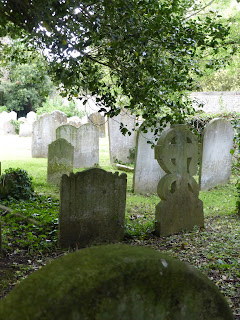West Norwood Cemetery, London
visited April 2011
West Norwood Cemetery is one of the 'Magnificent Seven' Victorian garden cemeteries in London. It's in South London, in the borough of Lambeth. Opened for burials in 1837, it contains a wonderful mix of landscaped and more wild areas. Burials still take place here, and the crematorium in particular is in regular use. The cemetery was created on land which was once part of the Great North Wood, hence the name Norwood, and some parts of the ancient woodland remain. Visit in spring for the bluebells, and the birdsong.
There's a wide range of the great and the good buried here - you'll find the vault of Sir Henry Doulton (of course made of terracotta), Sir Henry Tate (he of the 'Tate and Lyle' sugar), Isabella Beeton (cookery writer Mrs Beeton), artist David Roberts, Sir Hiram Maxim (inventor of the Maxim gun), and geologist Gideon Mantell, one of the pioneers of palaeontology, to name a few.
There is also a Greek Orthodox cemetery in the midst of the site, which I will write about in a separate post.
Despite being a working cemetery/crematorium, visitors are welcome to wander round and take photos. There are tours at various points in the year, including some opportunities to visit the catacombs - highly recommended if you don't mind the dark!







































